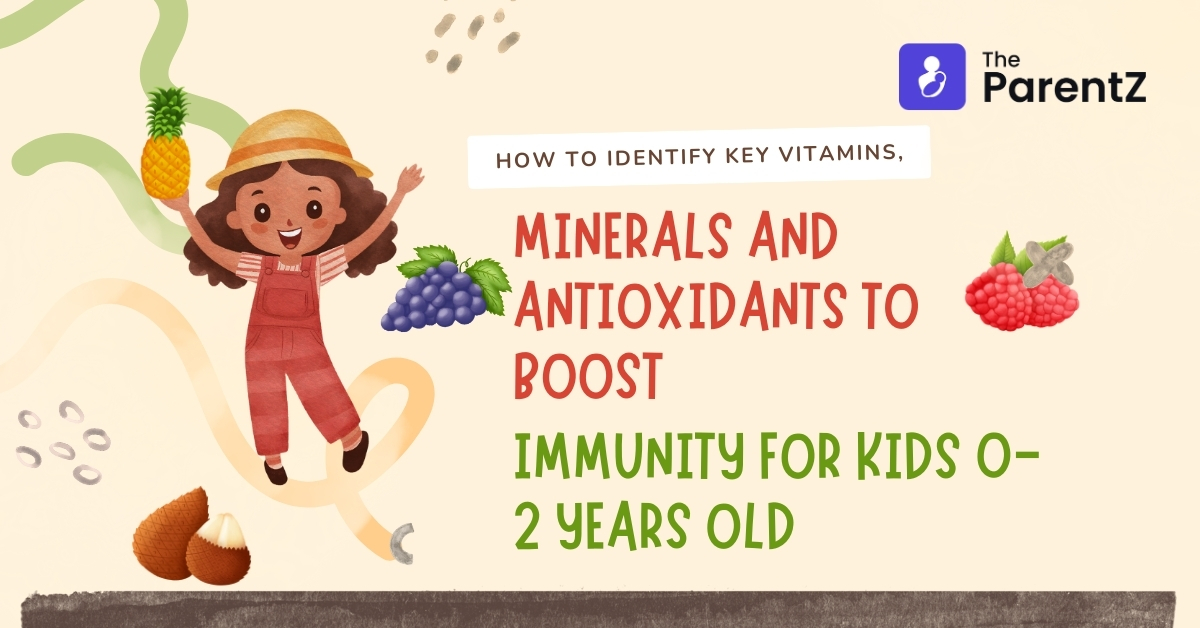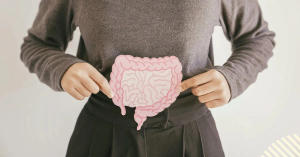Introduction
The immune system is the body’s way of fighting against bad germs and diseases. It is made up of many body parts that work together to keep the person safe from getting sick. A powerful immune system is very important for little kids, because they get sick more easily and their body’s defense system is not fully grown. Also, being in new places can make them more prone to germs and diseases.
One good way to help your child’s immune system is by giving them the food they need. The body’s food helps grow and work immune cells. It also makes antibodies and other proteins for the body’s defense against infections. Some nutrients are very important for good health of the body’s protection system. These include vitamin A, vitamin C, and other elements like zinc selenium, iron and protein too! These good things can help your child get better from sickness, lower down swelling and reduce deficiency that makes them weak.
In this piece, we will talk about why these nutrients are good for your kid’s defense system. We also explain how to find them in foods and fit them into what you give your child to eat. We’ll give some tips and tools to help you make good, balanced meals for your kid.
Why these nutrients are important for your child’s immune system
Each of these nutrients has a job to do in making your child’s immune system stronger. Here is a brief overview of how they work:
- Vitamin A: Vitamin A helps keep your skin, eyes and other parts all working good. This makes it hard for germs to get in your first line of protection against getting sick. Vitamin A helps white blood cells and T-cells work better. These are the fighters that attack and destroy outsiders coming into our body. Lack of vitamin A can make it hard to breathe, and cause stomach problems that lead to diarrhea. It might also increase the risk for catchin’ measles and you could go blind too!
- Vitamin C: Vitamin C is a strong group of things that keep your body safe from inside damage and harm caused by diseases or bad stuff around us. Vitamin C also helps make white blood cells, antibodies, and interferons. These molecules prevent viruses from reproducing in your body. A lack of Vitamin C can weaken the immune system and make it easier to become ill.
- Vitamin D: Vitamin D changes the way genes work in your body’s defense system and controls inflammation levels. Vitamin D also increases the work and growth of T-cells and B cells, which are the cells that make antibodies for fighting off diseases. It helps body memory too. Not having enough vitamin D can raise the chance of getting sick in your lungs, diseases that attack your own body and allergies.
- Vitamin E: Vitamin E is another kind of guard that keeps the skin and DNA from damage caused by oxidation. This helps lower inflammation too. Vitamin E also plays a role in how immune cells like natural killer cells, macrophages and T-cells work. It helps them change form to do their jobs better. Not having enough vitamin E can weaken your immune system and make you more prone to getting sick.
- Zinc: Zinc helps with more than 300 body jobs for the immune system, like making DNA and splitting cells. It also aids in fixing scrapes and protecting against damage from bad things called ‘free radicals.’ Zinc also helps the growth and start of different immune cells like natural killer cells, big eaters called macrophages, neutrophils which are smaller bacteria killing white blood cell. It can help T-cells (helper and attacker types) and B-cells to boost our body’s defense system against infections or diseases. A lack of zinc can impair your body’s defence against germs, making you more prone to get infections, lose water from your abdomen, cough owing to infected lungs, or become ill with malaria.
- Selenium is found in enzymes and proteins that help guard against damaging oxidation, repair DNA damage, regulate thyroid hormone utilization, and boost immunological action. Selenium also affects the function of some immune system cells, such as natural killer cells, large eating cells or phagocytes (macrophages), particularly T-cells, and B-cells. When there is not enough selenium, it can weaken the immune system and make us more likely to get sick from germs or viruses. It might also increase our chances of getting cancer
- Iron: Iron is important for making haemoglobin, the protein that takes oxygen to organs and parts of our body. Iron also helps nature killer cells, macrophages, neutrophils and T-cells to work well. It supports their growth too. Not having enough iron can harm your defense against diseases and make us more likely to get sick, have anemia or grow poorly.
- Protein: Protein is what all body cells and tissues, including the parts that make up our immune system are built with. Protein also gives power and it helps make immune system. It includes things like antibodies, cytokines, complement and interferons. These help keep us strong against diseases or illnesses. Not getting enough protein can weaken your body’s defense against diseases and make it easier to get sick, become unhealthy or lose weight.
How to identify these nutrients in foods
You can find these nutrients in many types of plant and animal foods. Here are some examples of foods that are rich in each nutrient:
Vitamin A: Vitamin A is found in two types: retinoids (from animal foods) and carotenoids (found in plant food). Retinoids are the active form of vitamin A that can be used directly by our body. Carotenoids are the early kind of vitamin A that our body has to change into retinoids. Some examples of foods that contain vitamin A are:
- Retinoids, herring fish, cow’s milk (enriched with vitamin A), shrimp sea creatures, eggs, and salmon.
- Carotenoids: Sweet potatoes, carrots, spinach, kale and greens (mustard collards beet) Swiss chard winter squash.
Vitamin C: You can find Vitamin C in many fruits and vegetables, especially bright or citrus ones. Some examples of foods that contain vitamin C are:
- Oranges, orange juice, grapefruit, and its juice too. Then kiwi comes along with green bell peppers cooked broccoli also known as Brussels sprouts. And don’t forget about raw strawberries because they are included here!
Vitamin D: Vitamin D is not found in much food naturally, but some foods have extra vitamins added. The best places to find lots of it are:
- Fish like salmon, tuna, mackerel, and sardines have a lot of fat.
- Egg yolks.
- Mushrooms are exposed to ultraviolet light.
- Milk from cows, soy milk, almond milk, orange juice, and breakfast foods with added vitamin D.
Vitamin E: Vitamin E can be found in foods from plants, especially those that are rich in fat or oil. Some examples of foods that contain vitamin E are:
- Sunflower seeds, almonds, sunflower oil, safflower oil, hazelnuts, and peanut butter are good sources of healthy fats. Avocado and spinach provide more nutrients while wheat germ oil is a rich source of vitamin E for better skin health.
Zinc: Zinc It’s is found in foods that come from animals and plants, but it’s easier for our bodies to use zinc from animal foods than plant foods. Some examples of foods that contain zinc are:
- Oysters, beef, crab, lobster, pork, chicken, yogurt, cheese, beans, lentils, chickpeas, oats, quinoa, pumpkin seeds cashews, and almonds.
Selenium: Selenium is in animal and plant foods, but how much it’s found in plants depends on the dirt they were grown from. Some examples of foods that contain selenium are:
- Brazil nuts, tuna, halibut, sardines, and shrimp are good sources of protein. Turkey and chicken also provide decent amounts while eggs contain cottage cheese. Brown rice oatmeal sunflower seeds mushrooms spinach gives you the essential nutrients for health
Iron: Iron comes in two types: heme iron (found in animal foods) and non-heme iron (from plant food). Heme iron is taken in by the body better than non-heme iron. Some examples of foods that contain iron are:
- Heme iron: meat, liver, chicken, and turkey from birds or pigs. Common sea animals to eat include clams, oysters, and sardines.
- Non-heme iron: beans, lentils, tofu spinach kale chard beet greens fortified cereals raisins apricots, and prunes.
Protein: Protein is present in animal and plant foods. Animal foods have better quality and more protein than plants. Some examples of foods that contain protein are:
- Meat, chicken, fish eggs
- Dairy means milk products like cheese. Soy is another product that doesn’t come from animals, with items made out of beans and seeds that can be seen in shops as legumes or diet foods. Nuts and quinoa might look new but they just help fill you up too
How to include these nutrients in your child’s diet
To ensure that your child gets enough of these nutrients for their immune health, you should follow these general guidelines:
Feed your baby only with milk from the breast for the first six months of life. After that keep breastfeeding until at least two years or even older as suggested by the World Health Organization (WHO) and American Academy of Pediatrics (AAP). Breastmilk gives your baby everything they need for good growth and development. It also has antibodies, and immune stuff that helps keep them safe from getting sick.
Start giving different foods to your child at around six months. Look for signs that they’re ready, like sitting up on their own and showing interest in food without pushing it out with the tongue reflex anymore. Begin by giving small amounts of foods that are soft and easy to eat like baby cereal, pureed fruits, or veggies. Make them more tasty with different types as your child gets used to eating real food. Give your kid foods from all food groups, and add in meals that are high in the nutrients listed above.
Stay away from foods that can choke kids, like nuts or grapes. Also, avoid food your child might be allergic to like honey and shellfish until they are over a year old. Give your kid food often and the right amount, based on their age and hunger. You can use the WHO’s growth charts to check your kid’s size and health with food. If you have any questions or worries, ask your doctor or a person who knows about food.






